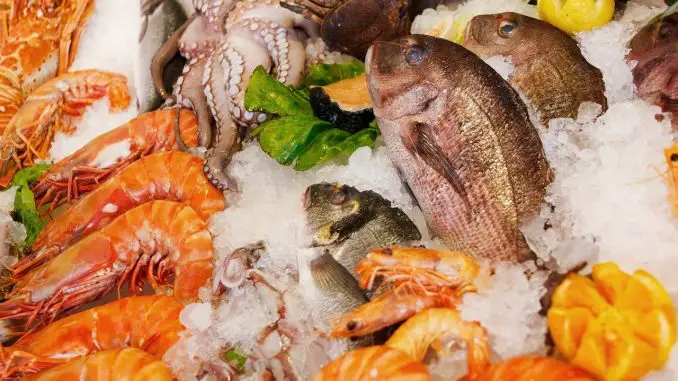
Eat fish with good conscience
It is said that one gets smart from eating fish. But sometimes it may actually be smarter to forgo. We are well on our way to emptying the oceans of fish. Choose wild-caught fish marked with Requirements or MSC, and you get nice fish. Or take help from our list – you can continue to enjoy the delights of the sea from time to time.
Our fishing list is your quick guide
In our fishing list, you will not find all fish. It is a simple quick guide where we chose fish that is okay to eat and fish that you should definitely avoid.
Perch, pike, pike and herd are usually okay to eat from an environmental perspective but have been removed because they can contain high levels of environmental pollution. Under the heading “Avoid” we identify fish that are really bad or where the fishing poses major problems for the environment.
Choose:
• Blue mussels – handpicked, cultivated
• Sea lobster – caged
• Crab – Locally produced, caged
• King Crab – Cage Captured in Alaska
• Oysters – hand-picked in Norway, farmed
• Scallops – hand-picked in Norway, farmed
• Herring – caught in the eastern Baltic, Northeast and Northwest Atlantic
• Cod – MSC-labeled
• Cool – MSC-marked
Avoid:
- Sharks
- Pangasius – cultivated
- Catfish
- Halibut – wild
- Giant shrimp, even eco-labeled – grown
- Kingfish
- Salmon – cultivated South American, caught in the Baltic and Northeast Atlantic
- Rays
- Red Snapper
- Swordfish
- Tilapia – if not cultivated in closed recirculating land-based systems
- Tuna – unless KRAV or MSC-labeled
- Cod – if not KRAV or MSC-labeled
- Eel – even cultivated
- Bottom trawled fish difficult to avoid
Bottom trawling is a bottom-poor fishing method for biological life in our seas.
As a consumer, it is difficult to avoid bottom trawled fish because it is not labeled “bottom trawled” but only “trawled”. It may as well mean that it is trawled in the free bodies of water, such as e.g. herring. But feel free to ask the store and the restaurant for fish and seafood fished using gentle methods such as cages, hooks and nets. They should know.
Giant shrimp continue to be very poor
Tiger shrimp, scampi, giant shrimp and gambas are different names for one and the same shrimp that has a really nasty past. It is a common shrimp on your sushi plate or in your Thai wok.
Cultivation of giant shrimp in the tropics takes place in large pools. In order to make room for the pools, the vital mangrove forest is destroyed. Fish and other seafood living in the forest disappear or die. The locals who were previously able to feed on fishing are left without opportunities to support themselves and harassed by the shrimp companies.
Large diesel pumps temporarily supply the shrimp with fresh water, but destroy the environment in the long run. When shrimp cultivation moves on, the local population is left in poverty in a totally wrecked environment. Abandon the cultivated giant shrimp and choose other good seafood that is significantly kinder to the environment.
Nowadays you can find ASC-branded giant shrimp in stores and at restaurants. Although we are generally positive about fish and seafood labels, we do not think that the requirements for the ASC-certified shrimp farms are high enough for them to be recommended
Wild-caught fish labeled with MSC always okay
Does it feel tricky to keep track of all celebrations? Choose wild-caught fish marked with MSC and you know that you will get nice fish. Both symbols mean that the fish comes from viable stocks. The markings have relevant requirements for fishing methods, by-catch and traceability. On the other hand, you cannot find spicy shrimp at present.
Salmon is a luxury
Salmon has become everyday food for many. But farmed salmon are raised on fishmeal, which helps to drain the seas in other parts of the world. In the countries where fishmeal is manufactured, both the environment and people are severely affected by the factories’ emissions. In addition, there may be major environmental problems where salmon are grown.
In Norway, for example, there are major problems with the farmed salmon infecting the already threatened wild salmon with parasites and diseases. In fact, Norwegian wild salmon populations have been halved since the 1980s. Farmed salmon is simply cheap in the store because someone else has already paid the real price. Let the salmon be the luxury food it is. And choose KRAV or MSC-labeled salmon when you want to treat yourself a bit.
Cod is still cod
What about cod? Unfortunately, the Baltic cod is getting worse, which shows that the management is not working properly. A reduced cod stock affects the entire ecosystem. Therefore, in order for the cod and its habitat to have a chance to recover, we therefore recommend that you completely abandon Baltic cod. As a consumer, you can help by choosing cod marked with MSC, then you send a signal to fishermen and decision-makers about what kind of fishing we want to see more of in the future.
Let the deep-sea fish swim calmly
As the fish in the world seas are sinking, you are fishing in ever deeper waters where the fishing boats’ nets have never before reached. Catfish, halibut, kingfish, redfish, redfish and long are all examples of deep-sea fish. They grow old and raise kids late in life, making them easy to eradicate. Most deep-sea species are fished so hard that they cannot reproduce. Deep-sea fishing is important in order for the ocean’s own circulation to function properly.
Leave a Reply